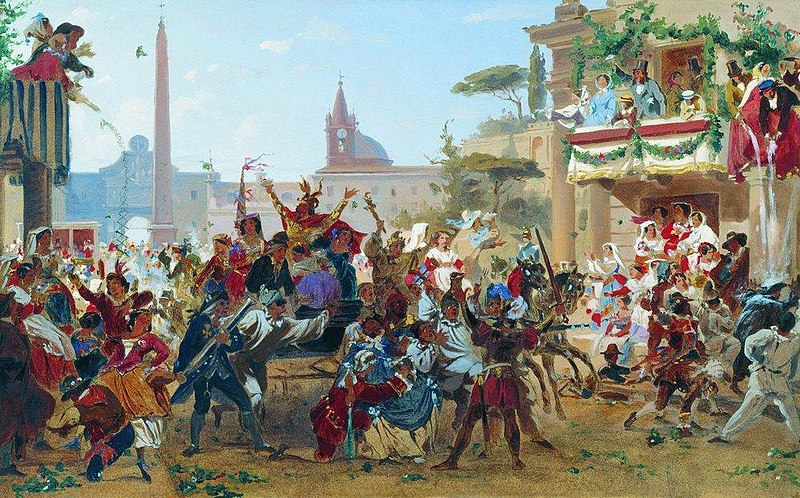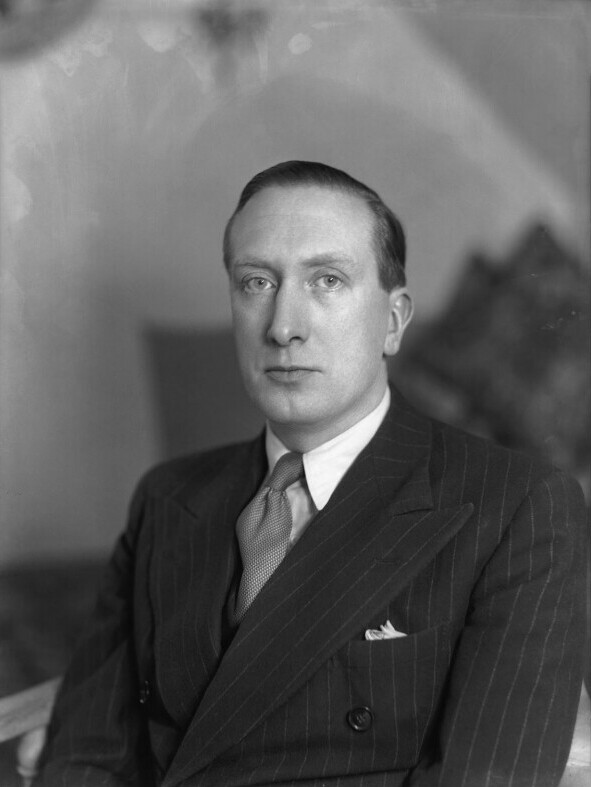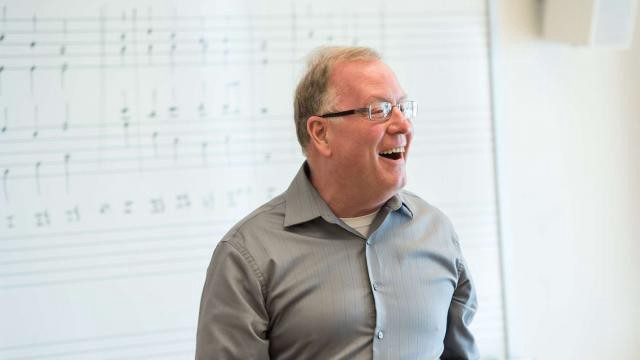
Hector Berlioz (1803–1869)
Roman Carnival Overture, Op. 9 (1844)

Hector Berlioz never met an applecart he didn’t want to upset, or an envelope he didn’t want to stretch. It was simply not in his nature to kowtow to prevailing fashion or to acquiesce to the dictates of the proletariat. Nor was he just some obnoxious agitator, all talk and no action. He meant it, and he lived it, and he wrote it.
He had his share of failures, many engendered by the exceptional difficulties that he imposed on the performers. Such was the case with his 1838 Cinerama/Imax operatic spectacle Benvenuto Cellini; it flummoxed the august Paris Opera and went so poorly that Berlioz described the premiere as being “dragged to execution.”
Never one to admit defeat, Berlioz rummaged through the ill-fated score and extracted material to form the Roman Carnival Overture, which succeeded marvelously at its 1844 premiere. Berlioz made it a regular part of his conducting repertoire and to this day the Overture remains one of his most popular and often-performed works. That’s with good reason: the piece is a delight from beginning to end, from its boisterously festive opening to its all-stops-out finale.
Viet Cuong (b. 1990)
Stargazer (2023)
World Premiere
Something to know about Viet Cuong’s new Stargazer, for piano and orchestra, is its deft blending of two musical techniques, one old and one new. First up, the old: ground bass, developed by long-ago instrumentalists for improvising dance music. Here’s how it works. A player on a bass instrument constantly repeats a pattern of notes, while melody-line instrumentalists play whatever they like, as long as it jibes with that bass pattern. It’s like jazz ensembles in which players take turn improvising their own fantasies on a tune, except in the ground bassit’s the bass line that remains the same while the ‘tune’ can be just about anything.

Viet Cuong
Some ground basses were named for the dances they accompanied, giving rise to the alternate terms passacaglia and chaconne. Nor was the idea restricted to improvisation; written-out passacaglias and chaconnes abound, including masterpieces by Corelli, Vivaldi, Bach, Brahms, Shostakovich, and Britten, among others.
Now, for the new: tape delay, familiar from Beatles’ albumssuch as Revolver, in which notes are simultaneously recorded and then played back after a brief delay; as the process continues the notes and their delays pile up, creating an ever-thickening texture. Nowadays digital technology makes such effects effortless, but back in the day they involved actual loops of tape running through a dedicated machine. And what we can do with studio artifice, we can do with live musicians in concert.
Which brings us back to Stargazer. An underlying cyclic bass line provides the basic structure, while everything above unfolds and develops, incorporating a layering similar to that created by tape delay.
About the name Stargazer: “I like the idea that the pianist is the Stargazer, with the piano as your telescope,” remarked Cuong during a conversation with pianist Sarah Cahill. “You’re looking out and hearing the orchestra twinkle around you and they’re taking the sounds from you. Each one of the notes echoes itself, so it snowballs and creates this very lustrous texture.”
William Walton (1902–1983)
Symphony No. 1 in B-flat Minor (1935)

Bassano Ltd, Public domain, via Wikimedia Commons
The story goes that William Walton was visiting Lucerne, Switzerland when Benjamin Britten’s 1945 opera Peter Grimes was being performed there. He passed by a music shop that featured a large photograph of Britten in its window. Walton walked into the store, spoke politely to the proprietor, then reached into the display window, grabbed the photograph, and plopped it face down on a chair. Walton left just as politely as he had entered.
Before World War II, Walton had been the Bright Young Thing of British music. Now he was being replaced by his younger colleague. Thus the sour grapes. But Walton needn’t have worried. His place in British music was secure, and Symphony No. 1 in B-flat Minor of 1935 played a critical part in making that so. It’s easily amongst the very finest of British symphonies, and that’s quite a distinction given the competition.
British music had undergone a renaissance in the late 19th and early 20th centuries. The symphonies of Edward Elgar and Ralph Vaughan Williams were internationally recognized, with Arnold Bax dominant amongst domestic symphonists. In 1932, when Sir Hamilton Harty asked Walton to write a symphony, Walton was known primarily for three spectacular early works, the quirky Façade: An Entertainment, the opulent cantata Belshazzar’s Feast, and a landmark Viola Concerto. A truly worthwhile symphony was going to be a heavy lift, so he took his time about it all. As of 1934 he had completed the first three movements. Then he hit a brick wall in his search for an appropriately optimistic ending. “I’ve burnt about three finales,” he wrote to a friend, “and it is only comparatively lately that I’ve managed to get going on what I hope is the last attempt.”
He got it at last, and the completed symphony was a sensation at its premiere in November 1935. The first recording followed a month later, and since then the symphony has amassed a sizeable discography, including a splendid 1953 outing with Sir William Walton Himself conducting the Philharmonia Orchestra.
The Walton First follows a time-honored trajectory from darkness to light established by Beethoven in his fifth symphony and Brahms in his first. The symphony progresses from turbulent drama in its first movement, through a biting second movement scherzo—it’s marked con malizia, or ‘with malice’—then into an impassioned and melancholic slow movement before launching into that triumphant finale that caused Walton so much headache.
Walton was not destined to be a prolific symphonist like Vaughan Williams, Arnold Bax, or Malcolm Arnold. Like his predecessor Edward Elgar, he would write only two symphonies, a grand-slam First at the peak of his career and a less well-received Second in his later years. Elgar’s second symphony eventually acquired the recognition it deserves, and, happily, so has Walton’s. But the Walton First remains unique amongst British symphonies, a forceful evocation of elemental passion, raw ferocity, heartfelt sorrow, and finally unbridled jubilance.
Program Annotator Scott Foglesong is the Chair of Musicianship and Music Theory at the San Francisco Conservatory of Music, and a Contributing Writer and Lecturer for the San Francisco Symphony. He also leads the California Symphony’s ground-breaking music education course for adults Fresh Look: The Symphony Exposed.
FRESH INSPIRATIONS, featuring pianist Sarah Cahill in Viet Cuong’s World Premiere of Stargazer, takes place Saturday, May 20 at 7:30 p.m. and Sunday, May 21 at 4 p.m. at the Lesher Center for the Arts in Walnut Creek. Tickets are $49 to $79 and $20 for students 25 and under, and include a free 30-minute pre-concert talk starting one hour before the performance. Buy tickets online or call or visit the Lesher Center Ticket Office at 925.943.7469, Wed – Sun, 12:00 noon to 6:00 p.m.


